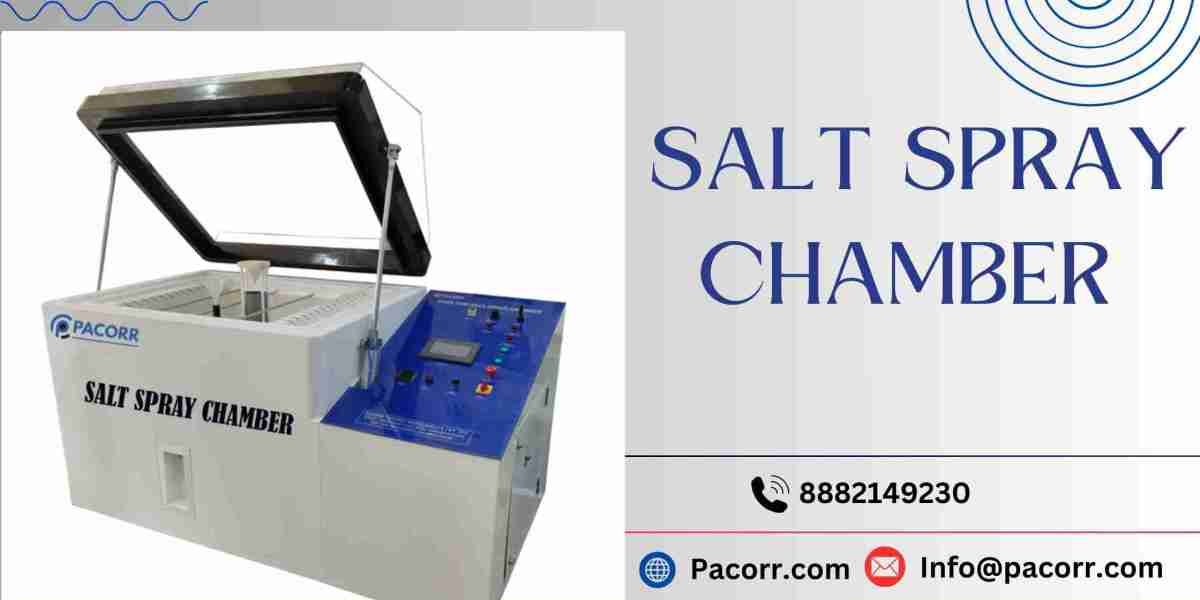Salt spray chambers, also known as salt fog chambers, are essential tools in industrial and material science applications for assessing the durability of materials in corrosive environments.
1. What is a Salt Spray Chamber?
A salt spray chamber is a laboratory device designed to simulate a harsh, salt-laden environment. The Salt Spray Chamber creates a fine, consistent mist of salt solution, typically a mixture of water and sodium chloride, which settles on the test materials. This controlled environment can replicate years of natural exposure in a fraction of the time, providing essential insights into a product's potential longevity and performance under corrosive conditions.
How Does It Work?
The chamber generates a salty mist that saturates the air and settles on the test materials, which are often metallic. Inside the chamber, variables such as temperature, humidity, and salt concentration are carefully controlled. The exposure to these elements mimics conditions like those faced by products in coastal regions or industrial areas with high levels of atmospheric pollution.
2. Why Salt Spray Testing is Important
Salt Spray Test Chamber is crucial for any industry that relies on metal or materials exposed to harsh conditions. By identifying weaknesses in materials or coatings early, manufacturers can make informed decisions about product improvement, materials used, and protective treatments.
Here are some of the key benefits:
- Predictive Analysis: By replicating years of exposure in hours or days, salt spray testing provides a quick look at potential durability. This helps companies predict how a material or product will perform in real-world conditions.
- Quality Control: Industries that require high-quality standards, such as automotive and aerospace, use salt spray testing as part of their quality assurance processes. This testing ensures that components meet stringent industry standards before they reach the market.
- Cost Savings: Detecting and addressing corrosion issues early can save significant costs associated with repairs, replacements, and warranty claims down the line.
- Product Improvement: Salt spray chambers allow companies to test the effectiveness of various anti-corrosion coatings and treatments, making it easier to optimize products and increase their longevity.
3. Common Applications of Salt Spray Chambers
Salt spray chambers are utilized in various industries for quality control and testing, including:
- Automotive Industry: Salt spray testing is widely used to test automotive parts, from body panels to brake components. This helps ensure that vehicles can withstand diverse weather conditions and road environments without succumbing to rust or corrosion.
- Marine Industry: Given that marine environments are highly corrosive due to constant exposure to saltwater, materials used in ships, offshore platforms, and marine equipment undergo rigorous salt spray testing to ensure they can withstand long-term exposure.
- Electronics and Electrical Equipment: Many electronic components, especially those used in outdoor environments, must resist corrosion. Salt Spray Chamber is commonly used to assess the protective coatings on these devices and to ensure that exposure to salt does not impair their functionality.
- Construction and Infrastructure: Materials used in bridges, buildings, and infrastructure in coastal areas need to withstand corrosion. Salt spray testing helps ensure the materials chosen can maintain integrity over time.
- Military and Defense: Military equipment often operates in harsh and variable conditions. Salt spray testing helps ensure that equipment will perform reliably in even the most challenging environments.
4. How Long Does Salt Spray Testing Take?
The duration of a salt spray test varies widely depending on industry standards and testing goals. For example:
- A 24-hour test might simulate months of natural exposure for a particular environment.
- Some tests may run for 500 hours or more to simulate years of exposure, especially for products that are expected to last several years without failure.
While these tests don’t perfectly replicate real-world conditions, they provide valuable insights into material resilience and areas where improvements may be needed.
5. Standards and Certifications for Salt Spray Testing
Numerous international standards govern Salt Spray Chamber Price procedures to ensure consistency and reliability. Some of the most commonly referenced standards include:
- ASTM B117: The American Society for Testing and Materials (ASTM) B117 is one of the most widely used standards for salt spray testing and provides a standard operating procedure for testing.
- ISO 9227: This international standard outlines the procedures for conducting salt spray tests, similar to ASTM B117, but with slight variations to meet global industry needs.
- JIS Z 2371: The Japanese Industrial Standard (JIS) Z 2371 is specific to Japanese manufacturing standards and is often used by companies operating in Japan or selling products to the Japanese market.
6. Limitations of Salt Spray Chambers
While Salt Spray Chamber is a valuable tool for predicting corrosion, it does have limitations. The environment within a salt spray chamber does not fully replicate the outdoor conditions materials face, as real-world corrosion is influenced by factors like UV exposure, temperature fluctuations, and variable humidity. Therefore, salt spray testing is often used in conjunction with other testing methods to provide a more comprehensive picture of material resilience.
7. Choosing the Right Salt Spray Chamber
When selecting a salt spray chamber, consider:
- Chamber Size: Depending on the types and sizes of materials you’re testing, chamber size can vary significantly. Large chambers allow for multiple components to be tested simultaneously, which can be cost-effective.
- Control Features: Modern chambers come equipped with features to control temperature, humidity, and mist density precisely. Some chambers also have programmable settings for testing cycles.
- Maintenance and Calibration: Regular maintenance and calibration are essential for accurate test results. Look for chambers that are easy to maintain and come with clear calibration guidelines.
Conclusion
Salt spray chambers are indispensable tools in today’s manufacturing and material testing industries. By simulating a highly corrosive environment, these chambers allow companies to predict product durability, ensure quality, and make informed decisions about materials and protective coatings. Despite their limitations, Corrosion Test Chamber remain a reliable, efficient, and cost-effective method for ensuring product reliability in corrosive environments. As technology advances, we can expect further innovations in salt spray testing, improving its accuracy and expanding its applications across industries.
Contact Us:
· Email: [email protected]
· Phone: 8882149230
· Visit our website at www.pacorr.com for more details on our testing instruments.














